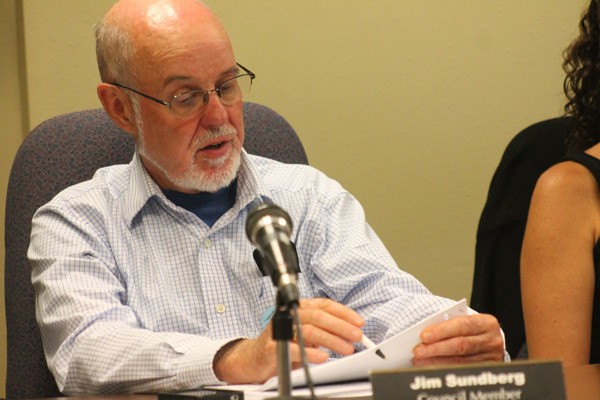The Langley City Council and Planning Advisory Board are at odds over the expansion of retail zoning to areas beyond downtown.
City zoning limits retail to the city’s commercial core, largely bound by Anthes and Cascade avenues to the west and east, and First and Third streets to the north and south. The idea, as discussed by city council members Monday, is to keep a vibrant commercial area and limit the disruptions to residents. For example, a high-traffic store may mean regular noise of cars and people, whereas a doctor’s office is less busy.
At last month’s city council meeting, however, a business owner’s request prompted the council to pursue a zoning change. In the late July city council meeting, Sarah Boin requested changing the neighborhood business zone — areas largely for low-impact, low-traffic services such as real estate offices, doctors, and restaurants. She contended that if she could move her outdoor apparel shop from its space on Third Street, where she said rent was higher, to the former Langley lumberyard and Living Green space on Second Street and DeBruyn Avenue, her business may begin to flourish.
That task began with the planning board, an advisory group to the city council, which previously rejected the idea and maintained that denial after Tuesday’s Planning Advisory Board meeting.
Over the past few decades, the building that now houses the popular Sundance Bakery has seen its fair share of busy businesses. At times, retail operated there without much fuss or stop-work orders from the city, and with little official complaint from neighbors.
“It’s the area that’s had historic retail use,” said Director of Community Planning Jeff Arango, adding that parking concerns are mitigated by the history of a “reasonably good-sized parking lot.”
On Tuesday, the day after Arango proposed that the city council eliminate the neighborhood business zones and making them commercial business areas, the Planning Advisory Board recommended to not allow the expansion of retail. Included in the unanimously approved motion, however, was a clause that if it were to be added to neighborhood business districts, it should be restricted to the very parcels that Boin wanted to use. The planning board will revisit the issue of allowing retail in neighborhood business districts as part of the city’s comprehensive plan update.
Depending on how the council interprets the planning board’s advice, Boin may not be able to open, dashing her plans to run the store next to the site of her husband Patrick Boin’s upcoming restaurant, the Salish Kitchen.
Some planning board members were concerned that the other neighborhood business areas could be developed into strip malls and divert commercial attention to the edge of town. Two of the larger tracts for neighborhood business zoning are on the way into and out of Langley — one on Third Street/Brooks Hill Road near the intersection with Coles Road; the other across from Langley Middle School and including the Langley fire station and Island Transit park and ride.
The fourth neighborhood business area is occupied by the vacant Edgecliff Restaurant building and the Langley Motel on Sixth Street and Cascade Avenue.
One part of a lengthier document about the city’s zoning code amendments, the overall changes had the mayor’s approval.
“I think it’s a very progressive plan but reasonable,” said Mayor Fred McCarthy.
As part of the city’s zoning code amendments, Arango said the city could hold a public hearing about the change and others at the next city council meeting, Sept. 15. That would also be the same day as the council’s second reading, at which time it could vote on the change.



